By Jason Jun
Grade 8, Charles Dewolf Middle School

What is Food Waste?
Food waste is a pressing global issue that has collected attention and consensus from prominent organizations, such as the Environment Protection Agency (EPA), United Nations, and ReFED. It can be defined as any uneaten food and inedible parts (e.g., peels, pits, bones) going to one of the following eight destinations: composting, anaerobic digestion, landfill, combustion, sewer, dumping, spreading onto land, or left unharvested. Food waste has been one of the most significant environmental problems and challenges in the world since the late 1800s and early 1900s. Today, food waste affects all three realms of sustainability: environmental, economic and social. It is an issue that everyone around the globe and it contributes significantly to the global problem of climate change. Approximately one-third of food produced in the world is wasted, which is equivalent to about 1.3 billion tons of fruits, vegetables, meat, dairy, seafood, and grains. The food that never leaves the farm, gets lost or spoiled during distribution, or is thrown away in hotels, grocery stores, restaurants, schools, and home kitchens could be a lifeline to those in need. This food has the potential to alleviate the hunger of undernourished populations across the globe. Beyond social aspect, the scale of food waste also has a heavy impact on our environment. The consequences include habitat destruction, decreased biodiversity and overuse of land and water resources. When food waste ends up in landfills, it decomposes and releases harmful greenhouse gases like methane, contributing to climate change. To protect our environment from climate emergencies, it is imperative that we collectively address the challenge of food waste.
GHG Emissions from Food Waste
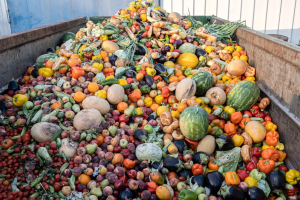
Credit: Roman Mykhalchuk/Getty Images

https://www.unsustainabilityreport.com/dk-eng/
The global food system, spanning from production through to its ultimate consumption, is responsible for approximately one-third of the world’s total annual greenhouse gas (GHG) emissions. These greenhouse gasses, such as carbon dioxide and methane, act as insulating blankets in the Earth’s atmosphere, trapping heat and exacerbating global warming and climate change. While there are key factors leading to GHG emissions, food waste stands as one of the most substantial and often overlooked contributors to this environmental crisis. The relationship between food waste and greenhouse gas emissions is more complex than initially apparent. When we waste food, we are not only wasting the food itself but also the resources used in its cultivation, transportation, and packaging. This wastefulness extends to land, water, energy and more. One of the most alarming consequences of food waste is the production of methane, a greenhouse gas even more potent than carbon dioxide in its heat-trapping abilities. When food waste ends up in landfills and begins to decompose, it releases methane into the atmosphere. In total, around 26% of global GHG emission comes from the entire process of food production including farming, transportation, and packaging. In contrast, an additional 6% of these emissions result directly from food losses and waste. It becomes evident that food waste is a considerable contributor to the climate crisis.
Tips to Reduce Food Waste at Home
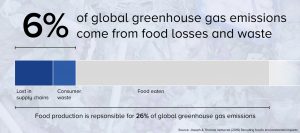
Around the world, food waste is a serious problem. Among the many locations where this problem occurs, the household kitchen emerges as a significant contributor, accounting for a substantial 50% of the overall food waste. Here is there are many places that produce food waste. Here are some practical tips to help reduce food waste at home.
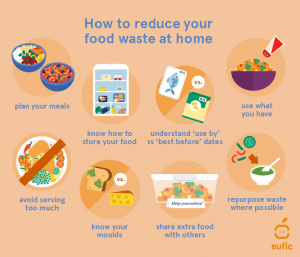
https://www.eufic.org/en/food-safety/art
1. Keep track of the food
2. Know the dates for the food
3. Don’t over purchase
4. Organize
5. Make use of every food
6. Composting
7. Regularly Check Your Pantry
8. Sharing with neighbors
Sustainable Recipes
1. Banana Peel Bacon

2. Candied Orange Peel
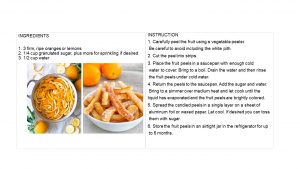
https://www.brighteyedbaker.com/diy-candied-orange-peel/
3. Super Crispy Potato Peel

https://www.marcellinaincucina.com/parmesan-crisps-2/
4. Fruits Leather
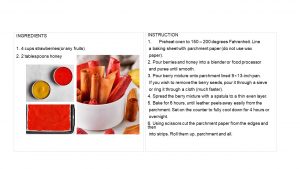
https://thebigmansworld.com/fruit-leather-recipe/
5. Veggies Broth Base


Jason Jun
Jason is an 8th grader at Charles Dewolf Middle School. He’s passionate about gardening and cooking, takes his soccer seriously, and always checks the air condition and weather forecast before games. He believes in consuming healthy food to maintain good health. He loves reading articles and watching YouTube videos about nutritious food. His environmental journey began when he realized a significant portion of greenhouse gas (GHG)emissions comes from the livestock industry. This led him to research the connection between food waste and emissions. In 2022, he participated in the StemFest Environmental Challenge, conducting research and presenting on GHG emissions. In 2023, he joined the US Summit for Transformative Education. As Student Council President at his school, Jason and his friends participated in the Walk to School Week in October 2023, gaining firsthand experience of air pollution caused by cars. He also took part in a 2023 photo contest sponsored by OTEC (Old Tappan Environmental Commission). This experience made him appreciate the beautiful natural environment in our neighborhood and understand the importance of protecting it. He plans to actively engage in activities aimed at reducing GHG emissions as an Eco Ambassador in the future.

 Sustainable development is the practice of reconciling the vast, consuming machine of human industry with nature, the very force it relies on. Sustainability’s urgency must be addressed by the youth, as they will inherit the Earth and cope with a multitude of ecological and climatic problems, including extreme heat, sea level rise, and diminishing ecosystems, as well as the stark inequalities caused by them. In order to face these challenges, we will need to redefine almost every aspect of our economy and society, an endeavor that will take decades of innovation and reform.
Sustainable development is the practice of reconciling the vast, consuming machine of human industry with nature, the very force it relies on. Sustainability’s urgency must be addressed by the youth, as they will inherit the Earth and cope with a multitude of ecological and climatic problems, including extreme heat, sea level rise, and diminishing ecosystems, as well as the stark inequalities caused by them. In order to face these challenges, we will need to redefine almost every aspect of our economy and society, an endeavor that will take decades of innovation and reform.